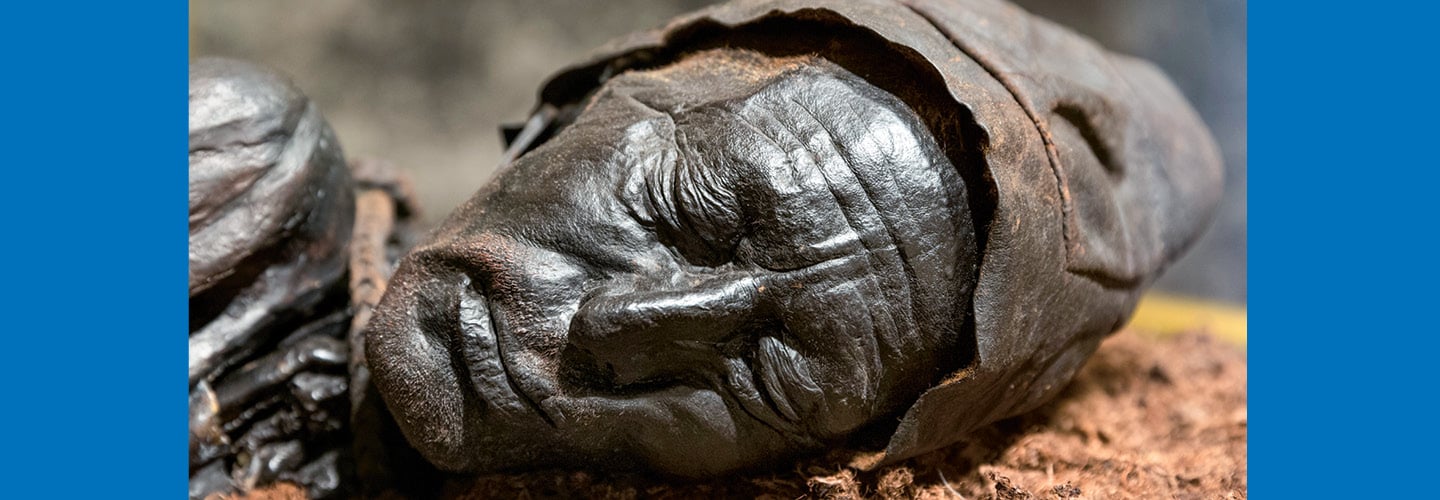The swampy bogs of Europe are revealing details about people who lived thousands of years ago. Scientists recently released the first comprehensive study of “bog bodies,” or ancient human remains that have been preserved in the acidic, low-oxygen environments of 266 historical wetland sites across northern Europe, from Ireland to the Baltic states. The cadavers are remarkably intact because of the natural chemistry of bogs; decaying mosses, for example, release acids that hinder the micro-organisms that would normally cause rotting and decay. The tradition of bog burials dates back about 7,000 years and particularly flourished from 1000 b.c. to 1500 a.d., from the Iron Age to the medieval period, researchers say. Most of the bodies show signs of traumatic injuries and are presumed to be murder victims, including the one known as Tollund Man, shown here. He dates back to the fifth century b.c., was recovered in Denmark in 1950, and can now be found at the country’s Museum Silkeborg. Some experts speculate that many of the bodies may have been part of ritual sacrifices undertaken at times of crisis, and they hope that further study will help them learn even more about what life was like long ago. “Bog bodies,” says Melanie Giles, a British archaeologist, “become strange kinds of ambassadors from deep time.”

Tim Graham/Getty Images
Text-to-Speech
